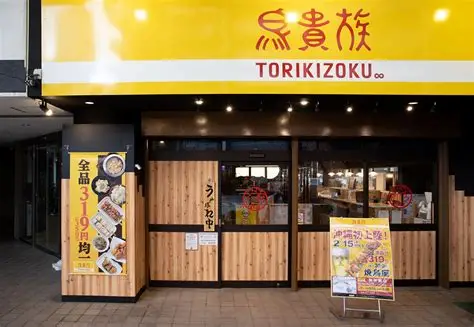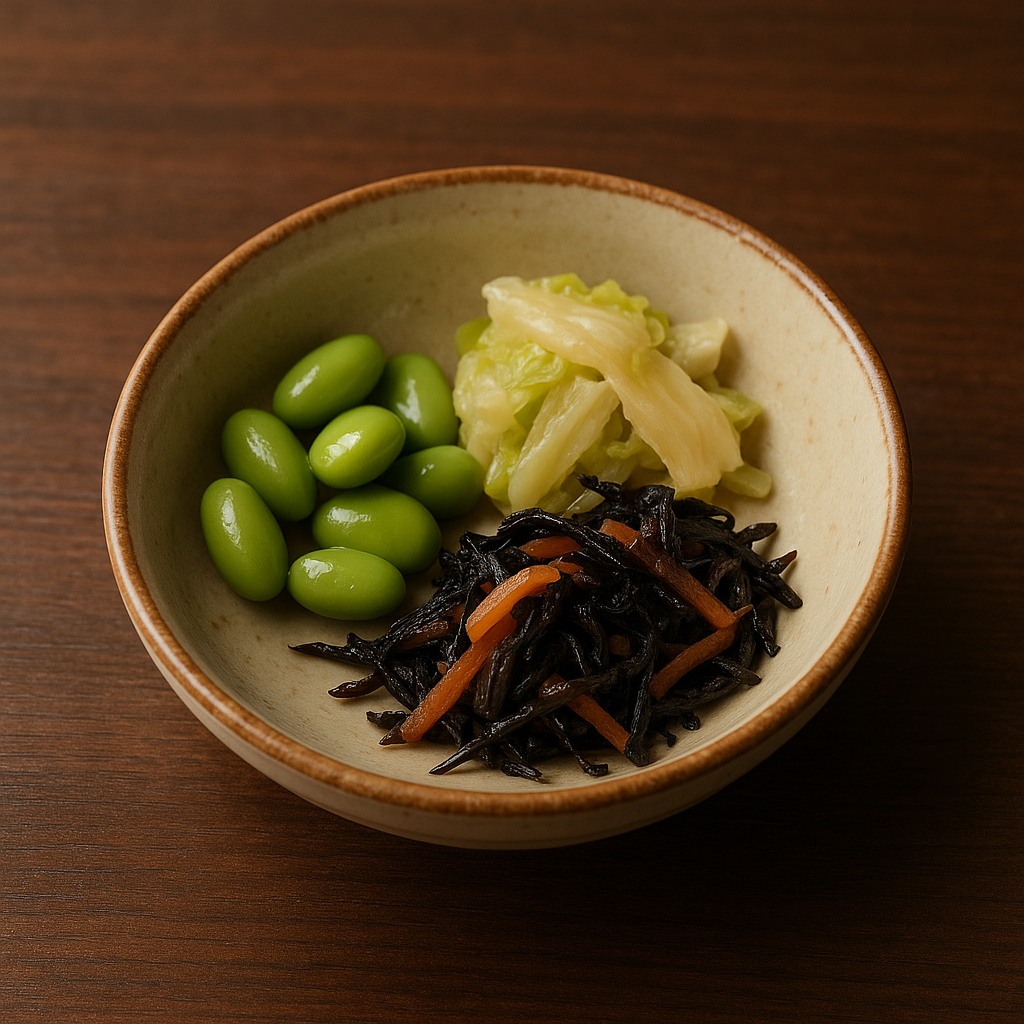Have you ever visited a Japanese izakaya (casual pub) and suddenly received a small dish you didn’t order—yet it appeared on your bill?
Many travelers get confused and even wonder if it’s a scam.
Actually, this is a long-standing part of Japanese dining culture called “Otoshi” (お通し).
What Is “Otoshi”?
In Japanese izakayas, it is common to receive a small appetizer the moment you sit down, even before placing an order.
This dish is called “Otoshi” (お通し).
Unlike a complimentary snack, otoshi actually functions as a cover charge (席料).
Instead of paying a fee just for taking a seat, the customer receives a small plate of food in return.
The cost of otoshi usually ranges from 300 to 600 yen per person(around $2–$4 USD, depending on exchange rates), and it is automatically added to the bill.
The content of the dish is typically chosen by the chef—often something seasonal or a house specialty.
Because of this, you may get to taste unique side dishes you wouldn’t normally order on your own.
Why Does It Come Without Ordering?
For many travelers, the biggest surprise is that the dish comes without asking. But there are cultural and practical reasons behind this system.
Historically, izakayas began serving a small dish right after customers arrived so they would have something to eat while waiting for drinks and food. It was considered a gesture of hospitality.
Practically, otoshi functions as a table charge replacement.
Instead of charging customers only for the seat, the restaurant offers a dish in exchange.
It also ensures that each guest contributes a small amount of revenue, which helps the business model of izakayas where people often stay for long hours.
In short, it’s not a mistake—it’s a cultural practice designed to make both customers and restaurants benefit.
Do All Restaurants Have Otoshi?
Not every restaurant in Japan serves otoshi. It is most common in izakayas—the casual pubs where people drink and share small plates. However, not all izakayas follow this system.
- Some chain izakayas may list it clearly as a “table charge” (席料) on the menu.
- Smaller, traditional izakayas usually serve an otoshi without explanation.
- Upscale restaurants, ramen shops, and family restaurants typically do not use otoshi at all.
So if you want to avoid otoshi, you can choose restaurants like ramen shops or large chain eateries. But if you go to an izakaya, it’s best to expect it.
Do Chain Restaurants in Japan Have Otoshi?

Whether you get an otoshi (cover charge appetizer) often depends on the type of restaurant. Here are 10 popular chains and their general rules:
Chains That Usually Serve Otoshi (cover charge applies)
- Torikizoku – Izakaya chain; usually includes otoshi as a seat charge.
- Hananomai – Seafood izakaya; most branches serve otoshi.
- Uotami – Large izakaya chain; otoshi is standard.
- Warawara – Common izakaya chain with otoshi.
- Shirokiya – Traditional izakaya chain; otoshi is included.
Chains That Typically Do NOT Have Otoshi
- Isomaru Suisan – Seafood grill chain; generally no otoshi.
- Saizeriya – Italian family restaurant; no otoshi at all.
- Coco’s – Western-style family restaurant; no otoshi.
- Yoshinoya – Beef bowl fast food chain; no otoshi.
- Kagetsu Arashi Ramen – Ramen restaurant chain; no otoshi.
👉 Note: Policies can vary by location. Some izakaya chains may clearly list “table charge” (席料) on the menu instead of serving otoshi.
Can You Refuse Otoshi?

For most izakayas, the answer is no—otoshi is a built-in part of the system. Since it functions as a cover charge, refusing it is often not possible.
Some restaurants may allow it if you politely ask before ordering, but this is rare. If you absolutely don’t want to pay for otoshi, the best strategy is to check at the entrance:
👉 “Do you have otoshi or a table charge?”
Otherwise, it’s better to consider otoshi as part of the izakaya experience, much like a cover charge at bars or clubs in other countries.
Common First Impressions
When you first experience otoshi, you might feel confused—“I didn’t order this, why am I paying for it?”
This is a very common reaction for travelers in Japan.
But many people also discover that otoshi can be enjoyable.
It’s often a tasty appetizer, sometimes something seasonal, and in many cases it’s cheaper than the cover charges at bars or pubs in other countries.
So while your first impression may be surprise, most visitors come to see otoshi as a unique part of the Japanese izakaya experience.
Tips for Travelers
If you’re planning to visit an izakaya in Japan, here are some useful things to keep in mind about otoshi:
- Expect an extra 300–600 yen per person (about $2–$4 USD) on your bill.
- Think of it as both a seat charge and a small appetizer.
- Enjoy it as part of the cultural experience—it’s not meant to trick you.
- If you really want to avoid it, ask before entering:
👉 “Do you have otoshi or a table charge?” - If you’re on a tight budget, consider family restaurants, ramen shops, or fast-food chains, which do not use otoshi.
Conclusion
Getting food you didn’t order in Japan can feel confusing at first—but it isn’t a mistake or a scam. It’s called otoshi, and it’s a long-standing part of Japanese izakaya culture.
Think of it as a combination of a seat charge and a small appetizer. Once you know what it is, you can simply enjoy it as part of the izakaya experience.
So next time you visit an izakaya, don’t be surprised if a small dish arrives without you asking. Instead, take it as a chance to taste something new and unique to Japan.

